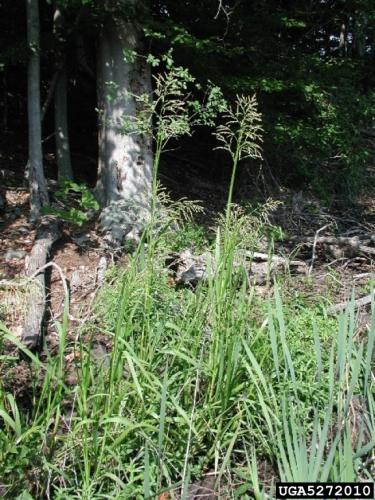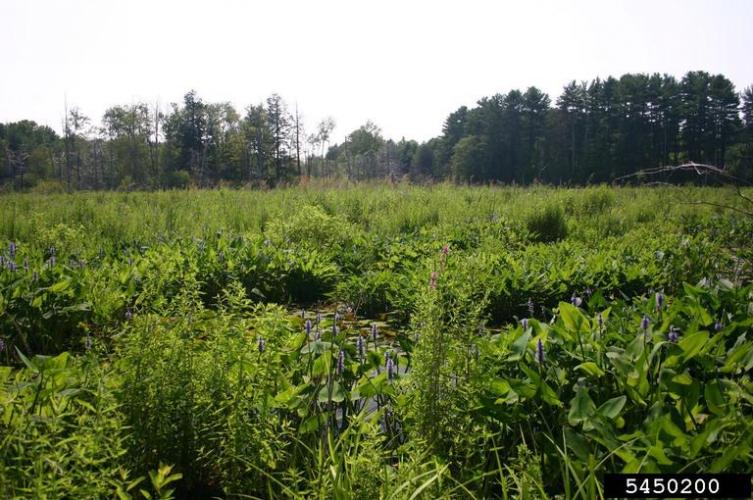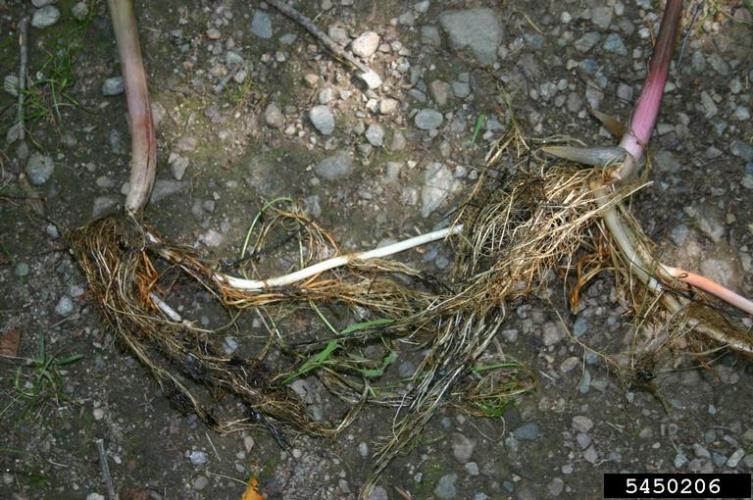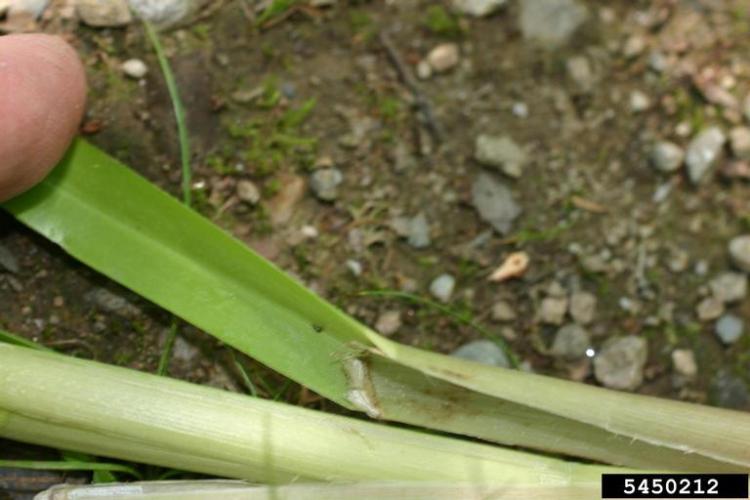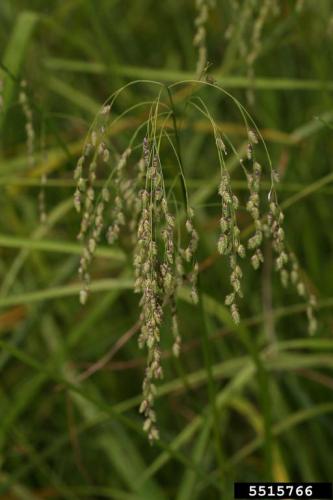Reed manna grass
Identification
Appearance
Glyceria maxima is a perennial, semi-aquatic, rhizomatous grass. Stems are unbranched and can reach 2-8.2 feet in height.
Foliage
Leaves are 12-23.6 inches long, 0.2-0.8 inches wide, with an acute apex and a prominent midrib. The leaf margins have stiff, short hairs. The leaf sheaths are rough in texture with a reddish-brown band at the leaf junction.
Flowers
Flowering occurs from June through August, when flowers appear in 6-12 inches long open panicles. The panicle branches have short, stiff hairs like those on the leaf margins.
Fruit
The small seeds are 0.06-0.08 inches long, obovoid in shape and smooth in texture. This plant reproduces primarily vegetatively through rhizomes.
Biology
ECOLOGICAL THREAT
Glyceria maxima occurs in sunny to semi-shady wetlands, where it can form dense impenetrable monocultures that crowd out native species. It is native to northern Eurasia and was first found in North America in 1940 on the edge of Lake Ontario.
ORIGIN
The first specimen of Glyceria maxima in North America dates from 1940 and comes from a marsh at the edge of Lake Ontario. Between 1940 and 1952 several more populations of the plant were located in this same region. It is possible that Glyceria maxima arrived some time before these records were documented. It may have been introduced intentionally as a forage species, or accidentally as part of packing material. The first record of Glyceria maxima in New England comes from the Ipswich River Wildlife Sanctuary in Essex County, Massachusetts in 1990. This Massachusetts population appears to be under control, and has provided some initial insights into how the species can be held in check.
HABITAT
River banks, stream banks, open wetlands, shoreland, disturbed areas
LIFE CYCLE
This species primarily reproduces vegetatively via rhizomes in North America. Reed mannagrass emerges early in the year and concentrates up to 50% of its biomass in its root system. The energy stored in the roots and rhizomes enable this species to produce new shoots through the growing season.
Glyceria maxima also has florets that can bloom and produce viable seed. Individuals are in bloom between June and August. Once the inflorescences are mature, the panicle opens and rises above the other foliage. Seeds dispersed in the fall will likely germinate the following spring; however, seeds can remain dormant and viable in the soil for several years.
During the winter, reed mannagrass becomes dormant. In early spring, regrowth occurs from rhizomes buds.
Vermont Distribution
How You Can Help
NATIVE/NON-INVASIVE ALTERNATIVES
Look for native plants at the nursery that are marginal emergent wetland grasses or rushes.
Native Perennials and Shrubs for Vermont Gardens
Alternatives to Common Invasive Plants and Characteristics of Select Alternatives
Citations
PHOTO CREDITS
Reed Manna grass rhizomes, 5450206, Leslie J. Mehrhoff, University of Connecticut, CC by 3.0
Reed Manna grass infestation, 5450200, Leslie J. Mehrhoff, University of Connecticut, CC by 3.0
Flowering Reed manna grass, 5272010, Leslie J. Mehrhoff, University of Connecticut, CC by 3.0
American mannagrass, 5515766, Rob Routledge, Sault College, CC by 3.0
INFORMATION CREDIT
Invasive.org, Reed manna grass
IPANE, EDDmaps, Reed manna grass
Wisconsin DNR, Reed manna grass
